Clear Coat Polish
The TLDR (Too long, didn't read) and the Deep Dive
Let's start with the TLDR:
Most cars made since the mid-1980s have a clear coat, which is simply a layer of paint without any color or pigment on top of the colored layer of paint. This is part of a 2-stage paint system, as opposed to single-stage paint which lacks this clear top layer.
The industry confuses most of us and clear coat polish is one of many examples.
Since every car, truck, or van will have a clear coat as the top layer of any factory paint job, the reality is that ANY polish regardless of how it is labeled, can be used to polish your car.
This marketing tactic of labeling products as being "clear coat safe" only adds more confusion.
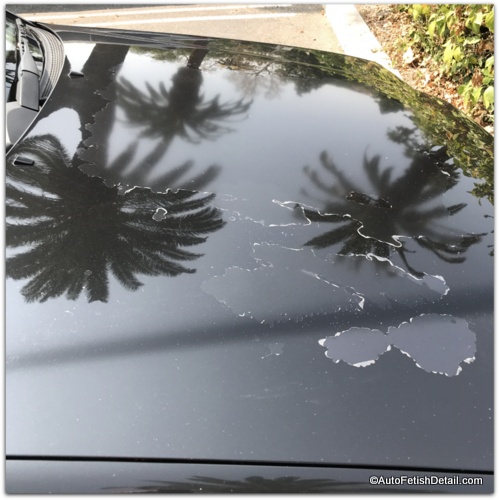 This picture is of the hood of a MBZ where the clear coat has completely failed. No polish in the world will save this moment. I show this picture to illustrate the two different layers of factory paint jobs highlighting the color coat that sits below the top clear coat.
This picture is of the hood of a MBZ where the clear coat has completely failed. No polish in the world will save this moment. I show this picture to illustrate the two different layers of factory paint jobs highlighting the color coat that sits below the top clear coat.Understanding the Basics of Clear Coat Polish
In simple terms, looking for a clear coat polish is the same as looking for a traditional polish for your car paint. Anytime people talk about car paint, we think of a surface material with color to it.
This is where the confusion begins due to clear coat having no color to it. Which leads people to think they need a special polish formulated for this clear, non-colored top layer we call clear coat.
But in simple terms, clear coat is just "paint" with no pigments added to it.
The color coat and the clear coat serve two different purposes as part of the overall paint system. I call it a "system" since it is a combination of layers that all serve their different roles.
Layers of the System:
- Protective layer for rust and corrosion.
- Primer to prepare surface for paint.
- Paint in the form of color.
- Clear coat that creates the actual gloss, has chemicals that absorb and reflect UV and infrared lighting from the sun, and serves as an overall physical barrier against the elements of nature.
Understanding the basics:
- Clear coat is good! (you want to protect it, preserve it, and sometimes polish it to restore shine and luster)
- Any polish, wax, or sealant can be used on clear coat regardless of whether the label identifies this or not.
- To create a permanent (as opposed to a very temporary or superficial) fix to your car, you will need to polish the paint (clear coat) with a product that has abrasives in it. (you would be literally scratching your way to a shinier car)
- There are all-in-one polishes and waxes, but I am of the opinion that you should handle these steps individually- meaning that you first polish the paint with a dedicated polish to restore shine and luster, along with removing certain amounts of scratching and imperfections, and then apply a wax or sealant for protection.
With that said, let me recommend a time tested clear coat polish that is safe for any car, any clear coat, any paint, anytime you want to restore the shine and luster, while removing some imperfections to your vehicle:
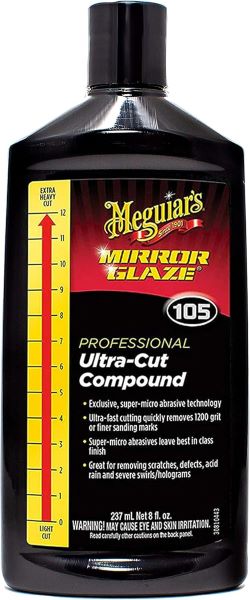
Meguiar's Mirror Glaze on Amazon
Clear Coat Polish
The good news is that regardless of what you have heard or read, you don't need a special polish made for clear coat. Clear coat safe products (waxes, polishes, sealants, etc.) are nothing more than industry hype that is part of every product or tool this industry wants to sell you.
But the fact that you are here asking about clear coat polish strongly suggests that you are working on limited information and experience. Which then leads me to believe you have likely fallen prey to the marketing hype of this industry.
Be not discouraged as I will enlighten you if you are willing to invest a few moments of your time.
What Is Clear Coat
Clear coat in its most simplest of explanations is car paint, with no added color or pigment. It is the top layer of what is called a paint system. And virtually every new car, truck, or van made since the mid eighties has a paint system with a clear coat as the top layer.
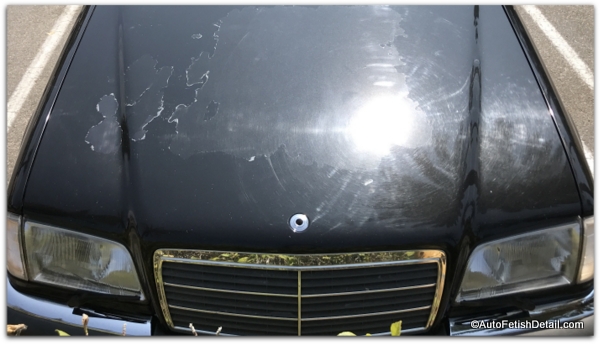
This doesn't really mean much in the way of special care and maintenance on your car. Unless you are an old guy like myself, it is unlikely you have ever worked on a car that has what is called single stage paint.
What Is A Paint System
Car manufacturers use this term that includes all layers applied to a car in the production process.
As part of paint systems, car manufacturers use different methods of application as part of their particular paint system (liquid spraying, wet dipping, electrostatic, etc.) While most people think of car paint as being applied with a spray gun using traditional liquid paints, the industry has evolved by adopting various other types of application processes.
A simple explanation of a common paint system would be application of a corrosion inhibitor, primer, color coat, with an application of clear coat as the final, and top layer.
What Is Single Stage Paint
Single stage paint refers to a paint system that has not been finished with a clear top coat. This could include, but not limited to lacquer, acrylic enamel, acrylic urethane.
Single stage paint jobs are virtually non-existent in the world of factory paint systems.
What Is 2-Stage Paint
Not to be confused with 2K paint systems or 2K clear coats, 2-stage paint systems refer to any paint job that has been finished with a clear coating as the top coat.
In simplest terms, a clear coat is paint with no color pigments and will be the top coat of a paint system.
How To Tell If Your Car has Clear Coat
The simple default answer would be that in every case, your car will have a 2-stage paint system with the exception of the following cases:
- Your car was made prior to mid-eighties (the 2-stage paint system was adopted gradually based on many factors so there is no hard-line rule based on year, color, make, or model)
- Your car has been repainted by a body shop (this could be the entire car, whole body panels, or partial body panels)
- Some solid white cars/trucks past the eighties were still being painted solid white with no clear coat
Darren's Note: When I say solid white, this means any car, truck, or van that has no pearl of metallic as part of the white paint. The most common examples of these unique situations based on my experience are the following: Mercedes Benz, Toyota Trucks, and commercial trucks/vans.
Hard Clear Coat vs. Soft Clear Coat
Any discussion on hard clears versus soft clears is almost irrelevant. Since every clear coat will be uniquely formulated, there is a wide spectrum in clear coats.
There is no standardization within the industry. This requires anyone attempting to polish a car by hand or machine to respond based on "hardness" of the clear coat.
Darren's Note: If you have had the misfortune of visiting any of the car forums, detailing forums, or the "University of YouTube", you may have heard discussions by non-professionals about hard or soft clear coats. Any search for the best clear coat polish will generally include a discussion about working on hard or soft clear coat.
This only confuses people like yourself that are just starting out. Usually this discussion is added as a tool to over-dramatize the subject of car polishing as a way for a company to sell you their polishing system, or for a non-professional to sound professional.
All this really does is further confuse a group of people like yourself who already begin with limited knowledge and experience.
Polish For Clear Coat or Clear Coat Polish?
Not long after the introduction of clear coats and the 2-stage paint system, "Big Business" realized it could leverage the ignorance of car buyers by labeling products as clear coat safe.
Not limited to just clear coat polish, the industry started using the term "clear coat safe" on many products in effort to distinguish their product from the competition.
From car wax to car polish, there was no limit to how "clear coat safe" is used as a marketing strategy.
Clear Coat Polish:
What Would Darren Do
Now we come to the million dollar question that I am so frequently presented with by people like yourself:
"Darren, just tell me what you would do!"
And that is exactly what I will do with this kit that saves you time, money, and aggravation, while allowing you to produce truly professional grade results:
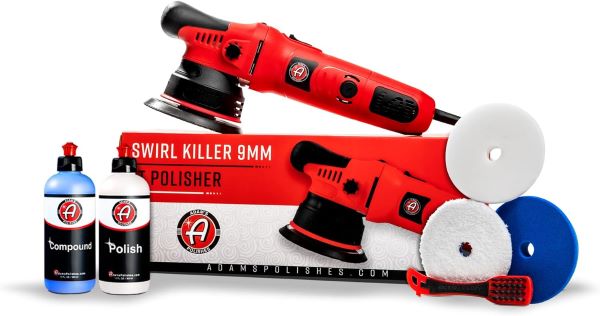
Adam's 9mm Car Polishing Kit on Amazon
- Safe for any paint finish, any clear coat (not recommended for matte paint finishes)
- Use the compound for heavy defect removal and the initial "cut"
- Use the polish to refine the surface to a brilliant shine
If you didn't opt for the Meguiar's "clear coat polish" at the beginning of this page, that suggests you are more committed to getting superior results when polishing your car paint.
This kit from Adam's represents the winning balance for any beginner looking to bring their car paint to show car like gloss!
- This is a dual-action, random orbital car polisher - the safest car polisher you can use.
- Comes with multiple pads- cutting to finishing.
- Comes with (2) types of polishes - compound and polish.
- Comes with a cleaning brush to keep both types of pads fresh during the polishing process.
Darren's Note: You can spend a ton of money on other tools and products. The reality is that you are going to do a limited amount of polishing -unlike a professional detailer like myself- and you will lack the experience to know the difference between a $400 buffer and this enthusiast grade buffer.
If this is true -which it is or you wouldn't be reading this- then why break the bank?!
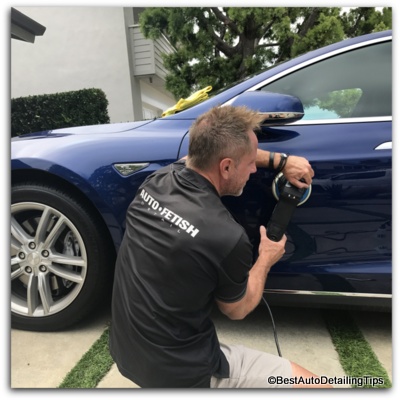 Here I am using a very expensive professional car polisher as a detailer.
Here I am using a very expensive professional car polisher as a detailer.Before I let you go let me lay out the exact steps I recommend if you are committed to that show car shine:
- Wash car (See washing car)
- Decontaminate paint using clay bar (See clay bar kits)
- Use your choice in a dual-action, random orbital buffer
- Apply 6-8 pea size drops of polish onto polishing pad, evenly spaced
- Set buffer speed to 4 or 5 and place buffer onto car so it remains flat
- Polish a 2' x 2" section of your car using back and forth, up and down pattern
- Wipe area off with micro fiber cloth and check results
- if you have achieved desired results, move to next area making sure to overlap sections
Every car is different and every manufacturer sources their clear coat from different manufacturers which means no tow clear coats are identical.
what you read on a forum or see in a video may be a startiiing point, but ddon't get hung up because you think you should be getting differnt results.
Just know that all the products and tools on this page are completely safe for beginners. also know that clear coats are "harder" than you think which simply means you do not have to overthink things as you start polishing for the first time.
Go in easy and build your confidence, and after a few passes you will see that everything is good and safe, and you are on your way to creating intense shine!
Clear Coat Polish Summary
At this point I hope you are feeling less confused and more prepared to begin polishing your car.
Start slowly and get your feet wet. You don't have to tackle your entire car in a single moment. Polishing your car is a lot of work regardless of the products and tools you choose, so pace yourself at the beginning and work from there.
Sincerely,
Darren Priest
- Home
- Car Clear Coat
- This Page
- This Page
|
|

